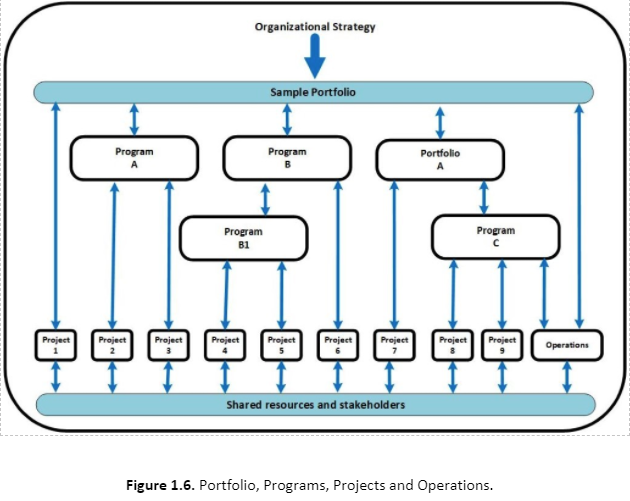
I.2.3. RELATIONSHIP OF PROJECT, PROGRAM, PORTFOLIO, AND OPERATIONS MANAGEMENT
Using project management processes, tools, and techniques puts in place a sound foundation for organizations to achieve their goals and objectives.
A project may be managed in three separate scenarios:
as a stand-alone project (outside of a portfolio or program), within a program, or within a portfolio.
Project managers interact with portfolio and program managers when a project is within a program or portfolio.
For example, multiple projects may be needed to accomplish a set of goals and objectives for an organization. In those situations,
projects may be grouped together into a program.
A program is defined as a group of related projects, subsidiary programs, and program activities
managed in a coordinated manner to obtain benefits not available from managing them individually.
Programs are not large projects. A very large project may be referred to as a megaproject.
As a guideline, megaprojects cost US$1billion or more, affect 1 million or more people, and run for years.
Some organizations may employ the use of a project portfolio to effectively manage multiple programs and projects that are underway at any given time.
A portfolio is defined as projects, programs, subsidiary portfolios, and operations managed as a group to achieve strategic objectives.
Figure 1.6 illustrates an example of how portfolios, programs, projects, and operations are related in a specific situation.
Program management and portfolio management differ from project management in their life cycles, activities, objectives, focus, and benefits.
However, portfolios, programs, projects, and operations often engage with the same stakeholders and
may need to use the same resources (see Figure I.6), which may result in a conflict in the organization.
This type of a situation increases the need for coordination within the organization through the use of portfolio,
program, and project management to achieve a workable balance in the organization.